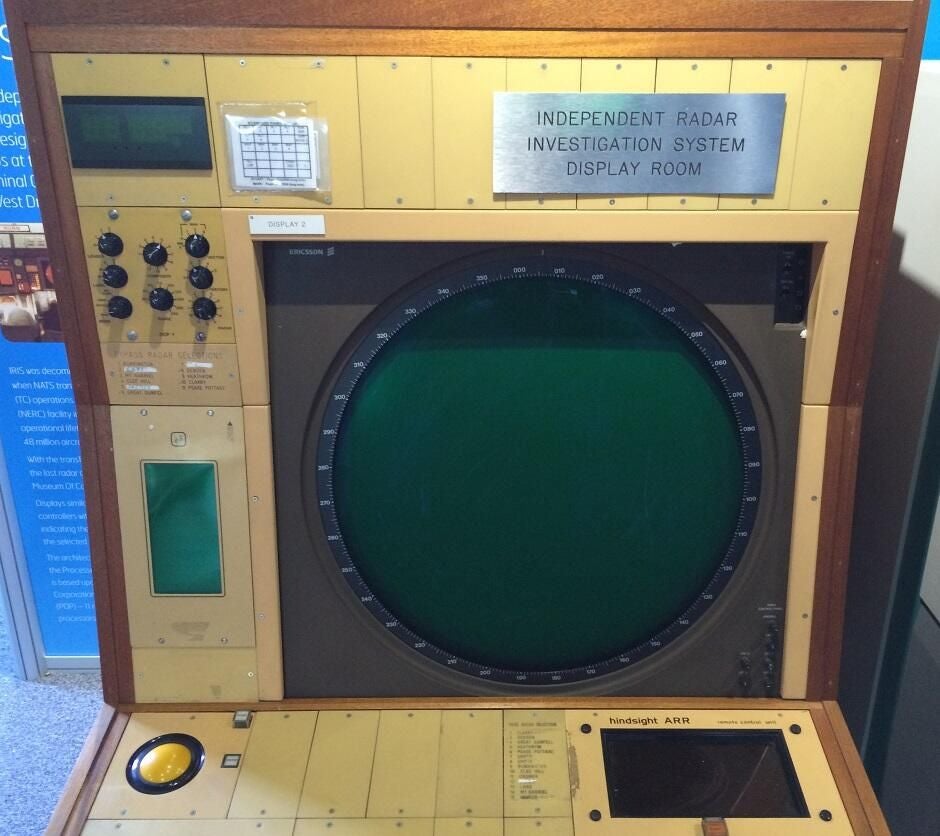Photos: The computers that kept our skies safe for the past 40 years
Image 1 of 10
Eye on the sky
In the past three decades the number of aircraft entering British airspace has more than doubled.
With more than two million planes flying over the UK every year, exponential gains in computing power have been essential for helping air-traffic controllers cope with the growing number of flights
“The biggest change has been the number of aircraft we can move through airspace. We’ve doubled the capacity of the UK airspace and done it safely with more fuel efficiency,” Gary Gibson, general manager of engineering design at the National Air Traffic Control Services (NATS), said.
Safely squeezing more aircraft into the airspace has, in part, been made possible using computer modelling. By using network flow dynamics to calculate the optimal arrangement of aircraft for safety and efficiency, NATs has been able to increase airspace capacity by 30 percent, Gibson said.
It’s a long way from where the National Air Traffic Control Services (NATS) started out in the 1960s.
This rather unusual looking machine, the Independent Radar Investigation System (IRIS), dates back to those early days.
During its 34-year lifetime, IRIS helped controllers at NATS London Area and Terminal Control Centre watch over 48 million aircraft journeys.
The fishbowl display marked all aircraft within radar range using vector graphics. Driving IRIS’ radar display were four Digital Equipment Corporation PDP-11 minicomputers.
The IRIS is part of a new display charting the history of the technology used by NATS at The National Museum of Computing in Bletchley, Buckinghamshire.
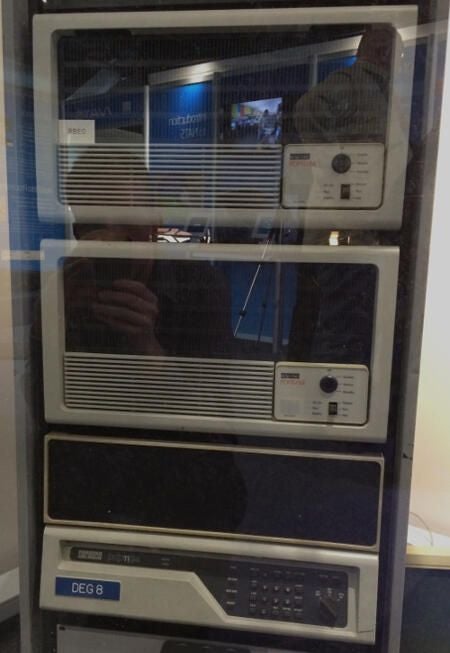

Towers of computing
Towers of computing
For more than a decade each of the 120 air-traffic controllers’ workstations at NATS headquarters were driven by these towers of computing.
The DEC PDP-11/34 machines were used both to drive workstation displays and as central servers to process radar data.
NATS’ Gibson remembers the heat and noise from “acres” of machines used to drive air-traffic operations at the time.
Each 16-bit machine had only a fraction of the processing power of the average computer today and had memory that measured in kilobytes – exponentially less than the 2GB found in the latest iPad Air.
“It was probably the processing equivalent of the 48k ZX Spectrum,” said Gibson.
NATs used the machines from 1974 through to 1985.
“They were very reliable and they met the capacity of the time,” said Gibson, explaining why they stayed in service for so long.
Alongside the PRDS was the civil Flight Data Processing system, which at the time was built around IBM 90200 computers.
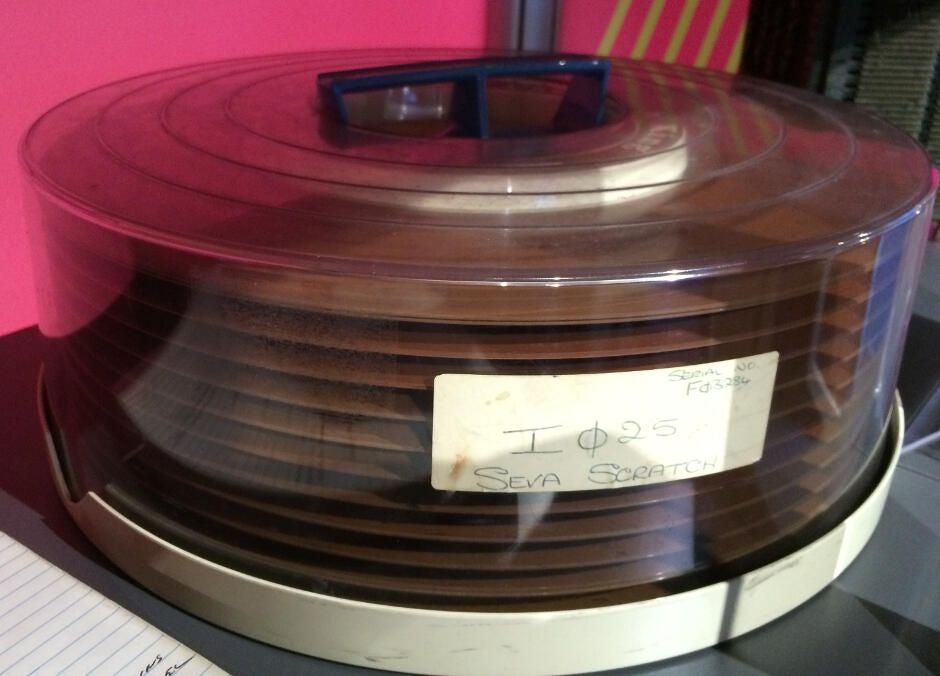

Portable computing 1970s-style
Portable computing 1970s-style
These huge platters formed a “portable” hard disc drive. The drive, produced by IBM in the 1970s could hold about 200MB – huge at the time but about 16 times less than the average memory stick today.
The drive was used at the London Area and Terminal Control Centre in West Drayton with the Flight Data Processing system.
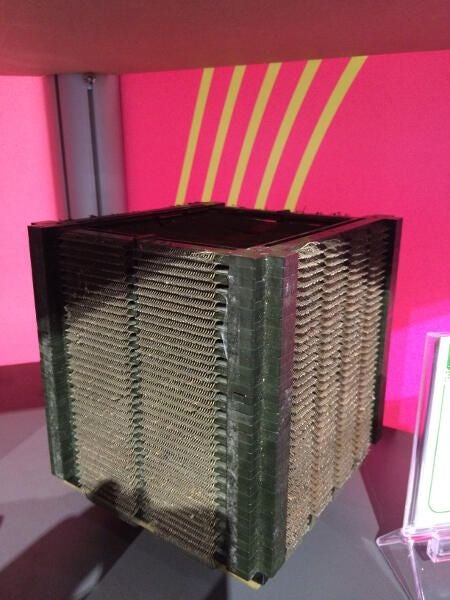

Boot times to rival the MacBook Air
Boot times to rival the MacBook Air
Magnetic core storage was the main form of computer memory used in NATS machines during the 1970s.
This block might be bigger than an iPhone, but could only hold 1kB of memory, a slither of that phone’s memory.
However, core storage wasn’t volatile, giving it an advantage over memory commonly used today. Relying on non-volatile memory meant machines didn’t have to load data from slower secondary storage – think spinning hard drives – every time the computer was switched on.
The upshot were machines with boot times that could give a MacBook Air a run for its money.
“If you switched it off and switched it on again you didn’t need to reload the program. All the data was still there. We’d be talking sub-10 second start-up times for these machines back in the 1970s,” said Gibson.
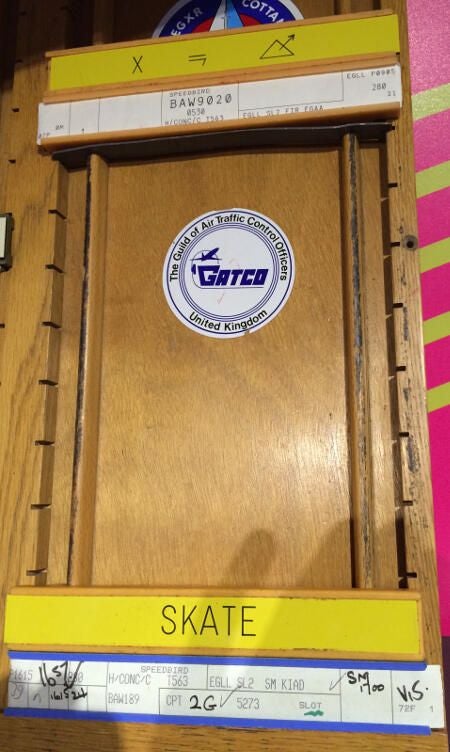

The last flight of Concorde
The last flight of Concorde
Flight data was printed on paper strips by UK air-traffic controllers until 2004, when Stansted became the first UK airport to switch to electronic displays.
This flight strip is for the last commercial Concorde flight, which arrived at London’s Heathrow airport in 2003.
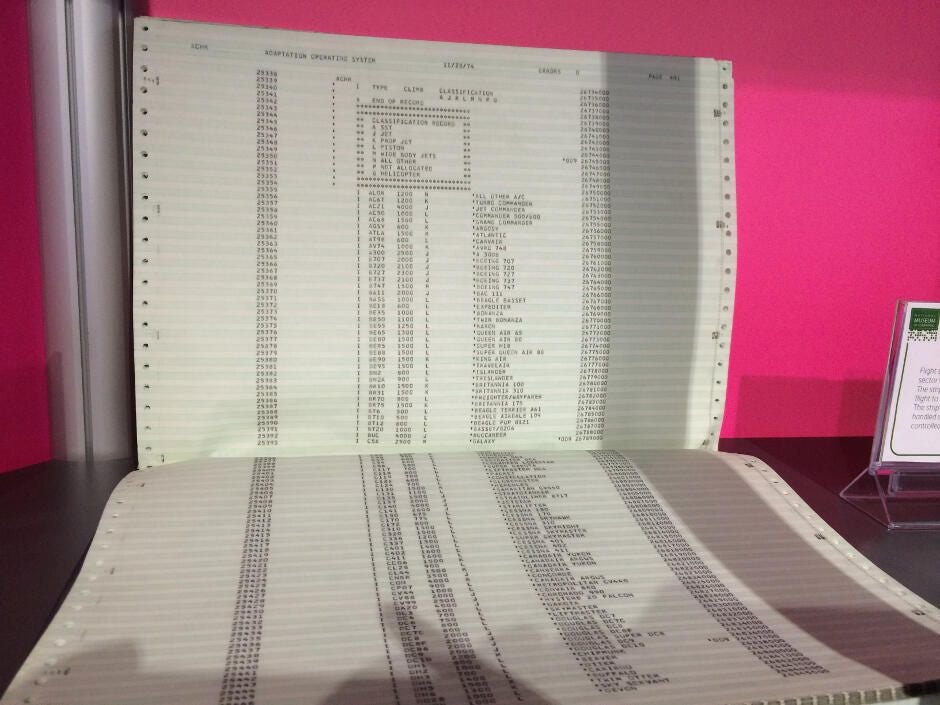

Order of the day
Order of the day
This dot-matrix printout shows the planes taking off and landing at the time.
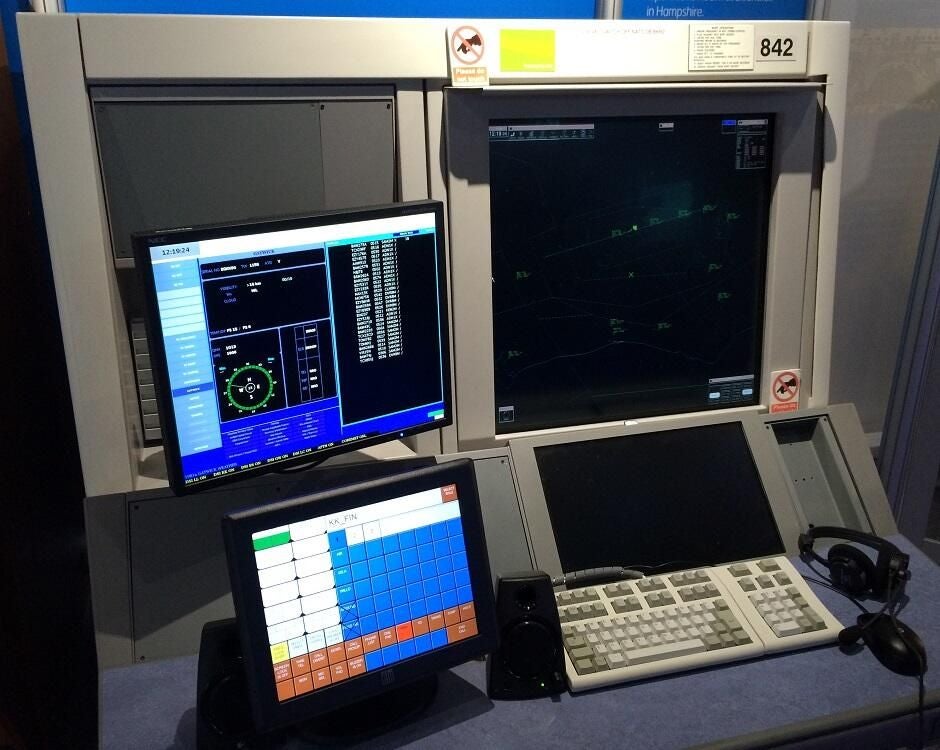

Present-day technology
Present-day technology
Moving to the modern day, this Alpha console is used by air-traffic controllers in NATS London Area Control Operations Room at Swanwick in Hampshire.
The large display tracks aircraft via radar and the two smaller screens show flight data and support information. The console also supports the communications equipment controllers use to talk to planes.
“The air-traffic controller will get a picture of all the aircraft that are in the sky and keep them safely separated,” Gibson said.
Controllers on the ground can also send electronic text messages to aircraft via a computer data link.
Each workstation packs two IBM Power processors, an IBM 520 for the radar display, and a higher-specced chip to predict where aircraft will be for the next 20 minutes. Central servers feed flight and radar data to each workstation.
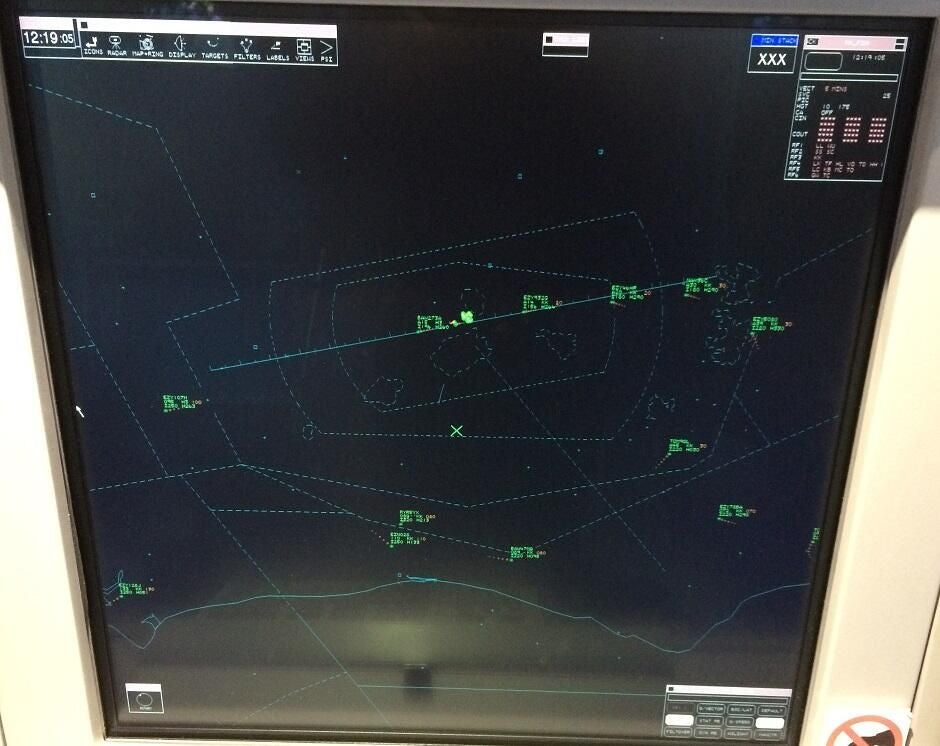

Tracking aircraft
Tracking aircraft
This close-up of the radar screen on the Alpha console shows a recreation of air traffic around Gatwick airport, as it would be shown to air-traffic controllers.
Controllers rely on a mix of primary and secondary radar to track the position of aircraft.
Primary radar locates the craft by bouncing a radio beam off its exterior and detecting the returning signal.
Secondary radar relies on a radio device called a transponder carried by the aircraft that relays the craft’s altitude, call sign and speed to a device on the ground.
Radar data is processed by computers to present controllers with a clear view of the aircraft’s position on the 2048×2048 display.
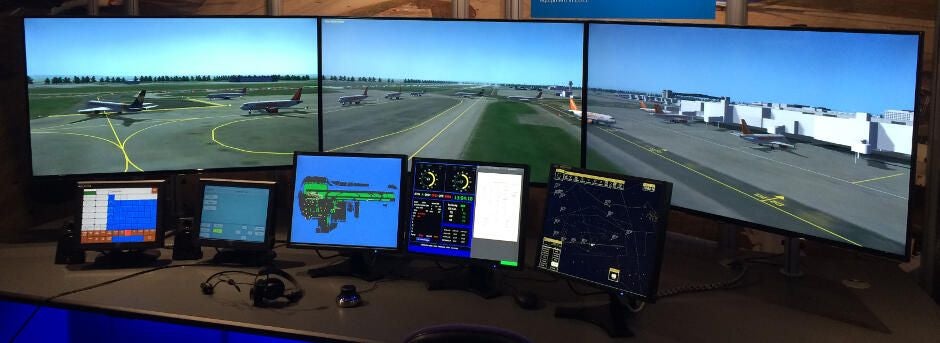

The view from the control tower
The view from the control tower
This is the view from the control tower at Gatwick Airport – one of the largest hubs for air traffic in the UK.
This simulator is used by NATS to train air-traffic controllers. The system is used to put rookies’ through hundreds of hours of tests to see how they cope with everyday and extraordinary scenarios.
Each 3D aircraft shown on screen can be flown by a real person, who is in radio contact with the novice to add realism to the tests. The scenarios include unforeseen events, such as pilots ignoring instructions and technical faults.
“99.99 percent of the controller’s life is routine but we need to make sure they are ready and prepared for those unusual circumstances that occur from time to time,” Gibson said.
As well being able to recreate runways, buildings and the surrounding landscape of the largest airports in the UK, the simulator gives controllers’ full view of the skies and allows them to use virtual binoculars to spot planes coming in.
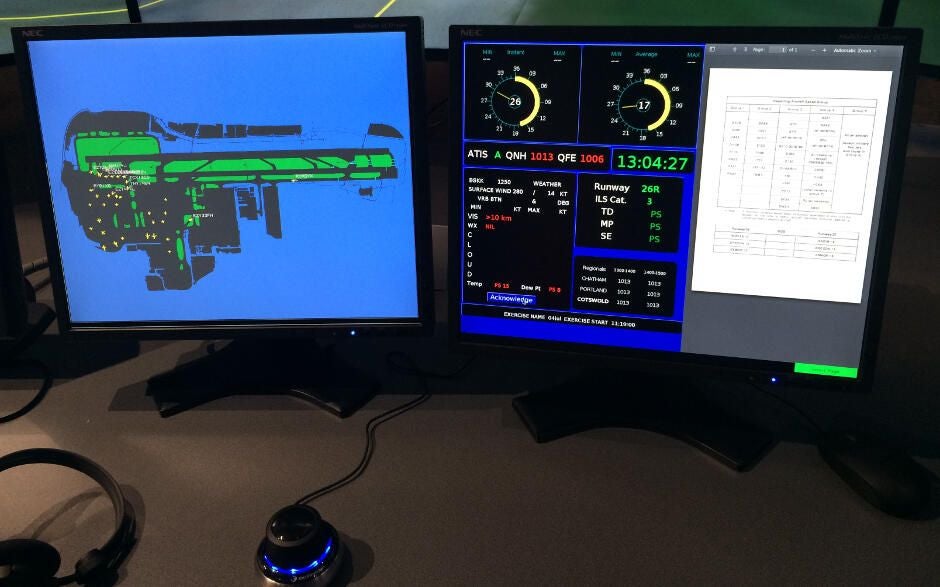

Just like the real thing
Just like the real thing
Alongside the 3D facsimile of the real airports, the simulator also recreates the flight data and radio communications the air-traffic controller would have at their console.
-
Account Information
Contact Nick Heath
- |
- See all of Nick's content
